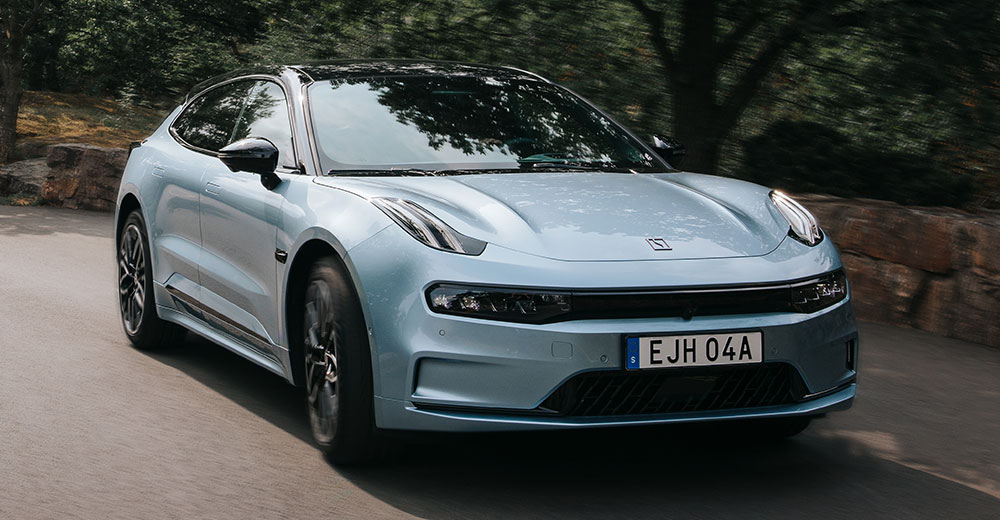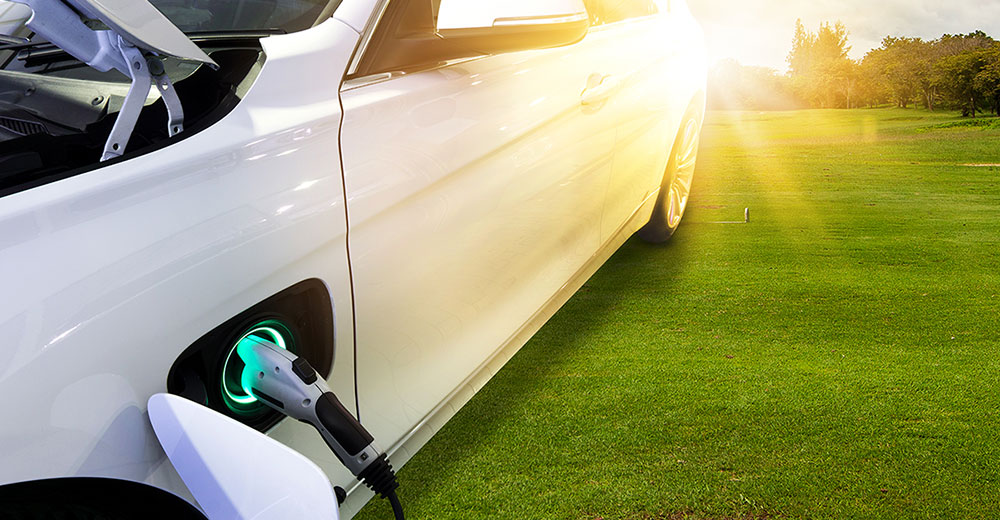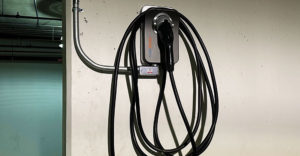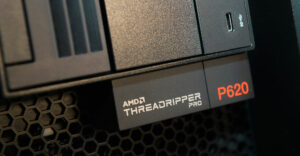Electric cars are facing challenges as we enter 2024.
Audi recently pushed back its pivot to electrics to 2030. Jaguar is struggling to survive until it can make its expected transition next year. Ford and GM appear to be cutting back their electric efforts, and other carmakers are talking about shutting down their dealerships to contain their financial bleeding, much of which is being blamed on poor demand for electric cars.
I’ve had two electric cars and have another on order, which will be on this list, but we are currently a world in transition. While all transitions are ugly, this one is especially so because the ecosystem wasn’t and isn’t ready for this pivot.
There is no doubt in my mind that this will all be settled by the end of the decade, but we’ll likely have a whole new list of carmakers, and many of those that currently exist may be bought or shut down due to this transition.
Let’s talk about the five best electric cars in the world right now — some of which aren’t available in the U.S.
We’ll close with my first Product of the Week for 2024, the best electric car charger in the market.
Understanding the Practicality of Electric Cars
When picking a “best of” list, it is important to understand how the reviewer sets the bar for “best.” As I’ve noted, I’ve owned two fully electric cars and still have one plug-in hybrid, which makes more sense right now for most folks than a full electric car because you aren’t dependent on the existing charging infrastructure to drive long distances.
To date, electric cars are best used as secondary vehicles for round trips under 200 miles, so you can charge at home and avoid public charging. This limitation arises primarily because Level 3 chargers have been undependable, with the exception of Tesla. However, those of us who can mostly charge from home don’t experience this inconvenience, and we have the benefit of never going to a public charging station that may not work or be accessible.
Most electric cars on the market mix internal combustion engine (ICE) and electric technology, which often conflict. Developers did not design these two types of technology together, and they may not even originate from the same century. Electric cars should be relatively reliable but often aren’t because of this legacy tech intermixed with newer tech, and the two don’t seem to be getting along well.
So, for the best, I’ll pick from a list of from-the-ground-up electric cars that lack much of this legacy tech and have at least 300 miles of range, which is, for most, enough to rely on home charging primarily.
If your commute is longer than 200 miles round trip, you may want to up your minimum range; cars with over 600 miles of range are coming. With that range requirement, I’d suggest staying with an ICE car or plug-in hybrid until 2026, when electric vehicles with greater ranges and more advanced batteries are due.
While only Tesla has this now, I’d favor cars with NACS (Tesla’s North American Charging Standard) over the non-Tesla J1772 port when possible, given the industry appears to be pivoting to the NACS standard. It’ll likely increase the car’s resale value when you are done with it, as well.
Following are my picks for the five best electric cars.
The New Tesla Model 3

(Image Courtesy of Tesla, Inc.)
Tesla just updated its Model 3. While it isn’t as cutting-edge as the Tesla Cybertruck, it is more practical, better priced, and a ton better looking than its larger, more advanced sibling.
As the Tesla lines are updated, the improvements are worth waiting for. Currently, the Model 3 is the most affordable updated offering and sets the bar for reasonably priced, ground-up designed electric cars. It can be configured with 333 miles of range, which exceeds my minimum range bar and has decent performance.
Tesla’s fit and finish have improved of late (early Model 3s often were delivered incomplete), and it remains one of the best values in the market.
Tesla is also in decent financial shape, so of the electric-car-only vendors, it is the most likely to be around in five years, which is always a consideration given we’ve already had several electric car companies fail. While the price starts at $30,000, fully configured, they are closer to $45,000, which is still a decent value.
Lucid Air Sapphire

(Image Credit: Lucid Motors)
If I were rich, I would get the Lucid Air Sapphire. With up to 1,234 horsepower, this thing is at the highest end of a supercar in performance (1.89 seconds 0-60 time). It is in the Tesla Model X range in terms of size and price, meaning it isn’t cheap, with a fully configured price pushing $250,000. But if you want a no-compromise electric car in the U.S., this is it.
The Lucid Air Sapphire is one of the first cars to utilize 900V charging systems (good luck finding a 900V charger today), making it somewhat future-proof. It can be configured with up to 427 miles of range.
There was a recent Gumball Rally run with this car, and the only reason it failed to break the record was because it couldn’t yet use Tesla chargers, highlighting again the benefit of that charging network. It is another ground-up design that highlights what you could do if the price were almost no object.
Fisker Ocean Extreme

(Image Credit: Fisker)
Since I’m not rich, I recently ordered the Fisker Ocean Extreme, which is far more affordable at closer to $65,000 (prices start at a more cost-effective $38,000). It also features a ground-up design, and with around 364 miles of configurable range, it easily meets my minimum.
This Fisker is not only a decent-looking car, but it provides several unique features, like an airline-like fold-down table for the driver. I tend to eat burgers when traveling in the car, and having a table to put my meal on would be incredibly helpful. It is also handy when you have to sign a charge slip.
As one of the best-looking electric cars on the road, I put my money into the Ocean Extreme even though the company is on uneven financial ground.
Rivian R1S/R1T

(Images Credit: Rivian)
The Rivian R1S SUV or R1T pickup (there are two potential configurations), with a range of up to 410 miles on the pickup and up to 390 miles on the SUV, is one of the first electrics with a four-motor option, which should be far better than two-motor electrics off-road or on snow or ice because you can infinitely vary the power to all four wheels individually.
Four-motor capability makes Rivian one of the most advanced electric cars on the market, and it has some interesting, unique features like a slide-out RV-type tray under the rear truck bed. This vehicle prices out in the mid-$80,000 range, depending on configuration, but the delta is worth it for those four motors.
I’ve seen this truck out-race a Ford Raptor while pulling a trailer. This is an impressive vehicle, priced less and far more practical than the Tesla Pickup.
Zeekr 001

(Image Credit: Zeekr)
I’ll close my list with one of the Chinese cars we can’t buy here. This vehicle is one of the prettiest electric cars on the market. For instance, you might confuse it with a Porsche Taycan from a distance.
With a massive range of about 640 miles, an impressive interior, and prices discounted to start under $40,000 (the similar Porsche starts at around $90,000 and can exceed $160,000), this is one of the best bargains currently in the market. While you can’t buy the Zeekr 001 in the U.S., it is expected to be very similar to the Polestar 4 which will be available here this year starting at around $60,000 and is also a stunning car.
I picked this over the BYD Denza N7 because it is a little cheaper, and I think it is better looking, and it anticipates a car that will be available here. (Note: BYD either has or is expected to pass Tesla as the top electric car company in the world.)
China has some exceedingly competitive electric cars coming to market, and the market protections currently keeping it out of the U.S. won’t last indefinitely.
Related: The 5 Best Plug-In Hybrids for 2024 | Jan. 29, 2024
Wrapping Up
As noted, I chose the Fisker Ocean as the electric car that best matched my needs. None of the legacy U.S. car companies have vehicles that I view as competitive, primarily because they continue to approach this market with cars that are derivative of their ICE vehicles. That approach makes them more expensive and less performant than the cars brought to market by more focused electric car companies.
Ironically, I sat down with the then-CEO of Ford around a decade ago and told him if he didn’t pivot more to the Tesla model, he’d lose his job, and Ford would fail. He did lose his job, and Ford is simply not competitive with Tesla, let alone the Chinese car companies.
I talk to tech suppliers to the U.S. legacy car companies often. The suppliers complain that these automotive manufacturers just don’t understand that they are now in a tech business where you do ground-up designs around the tech, you cycle that tech far faster than the traditional three-to-seven-year time frames ICE cars typically have, and you simplify designs to avoid excess complexity to increase reliability and reduce costs.
The suppliers’ common comment is that these car companies just “don’t get it.” If they don’t fix that, I expect that some, if not all, of these automakers will be gone by the end of the decade. The trend isn’t looking good for them at all.
U.S. legacy car companies had better step up, or they’ll likely be stepping out since currently they aren’t competitive with any of these listed electric cars.

ChargePoint Home Flex EV Charger

(Image Credit: ChargePoint)
At $549, the ChargePoint Home Flex EV charger isn’t the cheapest Level 2 charger on the market, but it is the most performant. It has a decent app to manage the charge and can provide more power over a shorter period than any other home chargers I’ve tried. It looks good on the wall, and there have been no problems in the months since I had it installed.
Generally, you’ll need the hard-wired version and two dedicated 75-amp breakers to get the full performance. But short of a Level 3 charger, which is simply too expensive for home use as it costs well over $20,000 when installed, it provides the fastest and most reliable charge of any home charger I’ve tested.
I suggest getting the NACS version to make it future-proof, but then get a J1772 adaptor for it if you don’t have an electric car that yet supports the NACS standard (going the other way is a bit uglier) because most car companies have announced they will be switching to NACS this year.
Well-priced, very reliable, and with decent performance, the ChargePoint Home Flex EV charger is my Product of the Week.

























































